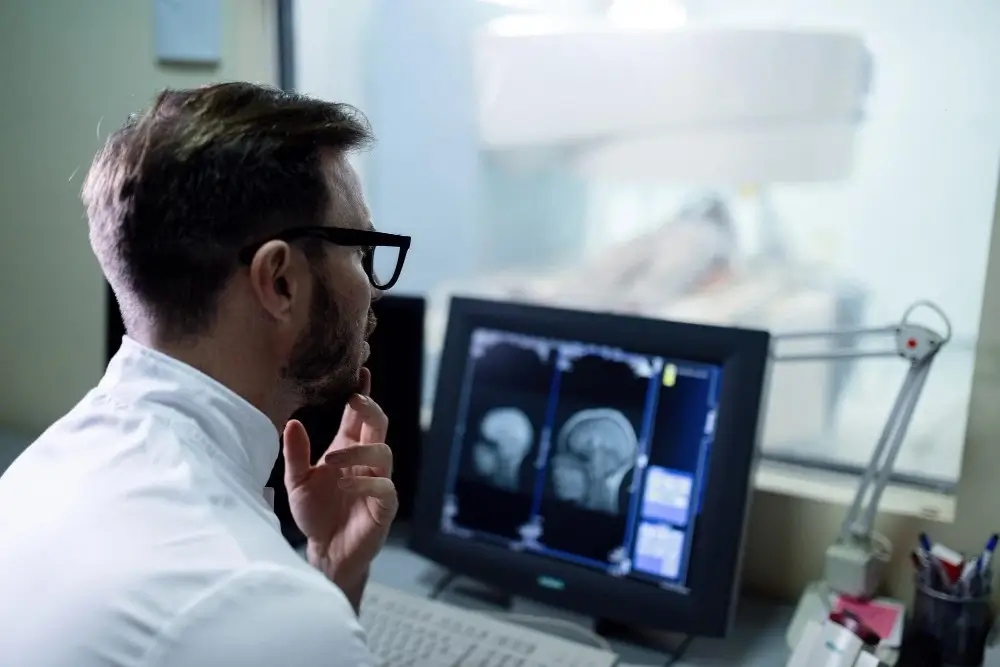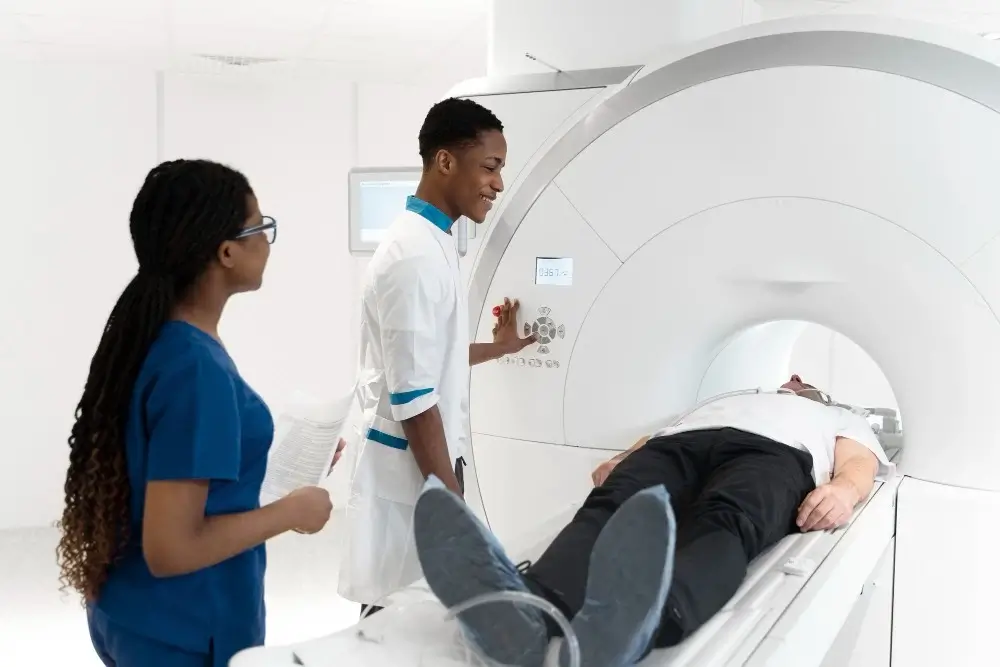2 years ago
·
hillside
Join us on a journey to demystify epilepsy. We’ll break down the complexities step by step, aiming to provide a clear understanding of this neurological condition and its various facets. We Will explore the causes, symptoms, and diagnosis of epilepsy, making this intricate topic accessible to all. Together, let’s navigate through the essential aspects of epilepsy, shedding light on its origins, signs, and diagnostic procedures.
What does “Epilepsy” mean to you?
Epilepsy is a chronic neurological disorder characterized by recurrent, unprovoked seizures. Seizures are sudden, abnormal bursts of electrical activity in the brain, which can lead to a wide range of symptoms and behaviors, from brief lapses in consciousness or subtle sensory changes to more severe convulsions and loss of motor control. Epilepsy can affect people of all ages and can be caused by various factors, including genetic predisposition, brain injuries, infections, or underlying medical conditions. Accurate diagnosis and appropriate treatment are essential in managing epilepsy and improving the quality of life for individuals with the condition.
The 10 Common Underlying Causes of Epilepsy.
Welcome to our exploration of the underlying causes of epilepsy, we will embark on a journey to unravel the mysteries surrounding this neurological condition. By delving into these essential factors, we aim to provide a clear and accessible understanding of what contributes to epilepsy. Join us as we navigate through the core aspects that shed light on the origins of this condition.
- Brain Abnormalities. Structural issues in the brain, such as tumors, malformations, or scar tissue from head injuries, can disrupt normal brain function, leading to epilepsy. These abnormalities may interfere with the brain’s electrical activity, causing seizures. A classic example is someone developing epilepsy after a traumatic brain injury in a car accident.

- Genetic Factors. Epilepsy has a genetic component, which means that if you have family members with epilepsy, your risk may be higher. Certain genes, like SCN1A, can increase susceptibility. A clear understanding of the genetic underpinnings is essential for diagnosis and tailored treatment. For instance, Dravet Syndrome, a severe form of epilepsy, is often associated with specific genetic mutations.
- Head Injuries. Head injuries, even seemingly minor ones like concussions, can trigger epilepsy. Athletes involved in contact sports are at risk due to repetitive head trauma. Understanding the relationship between head injuries and epilepsy is crucial, as early detection can help prevent or manage the condition.
- Infections. Infections that affect the brain, such as meningitis or encephalitis, can lead to epilepsy. One notable example is the herpes simplex virus, which can cause viral encephalitis. Identifying and treating infections promptly is essential to reduce the risk of epilepsy.
- Developmental Disorders. Certain developmental disorders like autism and neurofibromatosis are associated with an increased risk of epilepsy. It’s important to recognize the coexistence of these conditions and their shared neurological factors. This understanding can aid in early intervention and treatment strategies.
- Febrile Seizures. Febrile seizures are often associated with children who experience high fever. While not all children who have febrile seizures develop epilepsy, it is a potential risk factor to be aware of. Timely medical attention and fever management can reduce the likelihood of epilepsy in these cases.
- Brain Tumors. Brain tumors, whether benign or malignant, can exert pressure on the brain and disrupt its normal function. This pressure can lead to seizures. A glioma in the temporal lobe, for example, can cause seizures, emphasizing the importance of early tumor detection and intervention.

- Metabolic Causes. Metabolic imbalances, like hypoglycemia (low blood sugar) or electrolyte imbalances, can provoke seizures. Diabetic individuals who experience severe hypoglycemia may be at risk of developing epilepsy. Maintaining stable metabolic health is crucial in preventing these seizures.
- Strokes. Strokes can damage the brain’s blood vessels, resulting in inadequate oxygen supply to brain cells. This deprivation can trigger seizures. Ischemic strokes, caused by blood clots, are a common cause of epilepsy, highlighting the necessity of stroke prevention and timely treatment.
- Environmental Factors. Environmental factors like lead poisoning or exposure to toxins can increase the risk of epilepsy. Lead exposure in children, for instance, can lead to neurological damage and seizures. Identifying and eliminating these environmental hazards is critical to preventing epilepsy associated with them.
The 8 Common Symptoms You Should Know About.
It’s essential to be aware of the symptoms of epilepsy, as early recognition can lead to timely diagnosis and appropriate care. We will explore eight common epilepsy symptoms in a clear and straightforward manner, helping you understand this condition better.
- Seizures. Epileptic seizures are the hallmark of this condition. They manifest in diverse ways, from subtle momentary lapses in awareness to more dramatic convulsions. Seizures occur due to abnormal electrical activity in the brain, causing sudden, uncontrolled bursts of movement or sensations.
- Loss of Awareness. During seizures, individuals may suddenly lose awareness and become unresponsive. This disorienting phase is known as the ictal state, and it can be followed by confusion. Sufferers often have no recollection of the episode.

- Repetitive Movements. Some seizures involve repetitive and involuntary movements, such as lip-smacking, clothing-picking, or hand-wringing. These behaviors can be a telltale sign of an ongoing seizure.
- Sensory Changes. Epileptic seizures can provoke unusual sensory experiences. People may report odd tastes, smells, or visual distortions. These sensory disturbances can provide important clues for diagnosis.
- Muscle Stiffness. A common symptom is muscle stiffness or rigidity, which can make it hard to move during a seizure. It may cause a person to fall or result in an uncomfortable physical sensation.
- Emotional Changes. Some individuals experience intense emotional changes before or after seizures. These can include fear, anxiety, or a sense of déjà vu. These emotional shifts can be as disconcerting as the physical symptoms.
- Involuntary Urination. Epileptic seizures can lead to the loss of bladder or bowel control, which can be distressing for those affected. Understanding this aspect is crucial for caregivers and loved ones.
- Recovery Period. After a seizure, there is a postictal state where individuals may feel confused, exhausted, or even experience a headache. This phase is part of the seizure event and may vary in duration. Recognizing and assisting during this period is vital for the person’s well-being.
The Diagnosis of Epilepsy 7 Key Steps to Understanding.
Epilepsy, a neurological disorder characterized by recurrent seizures, affects millions worldwide. The path to an accurate diagnosis can be complex, involving various essential steps. Let’s explore the seven key components of epilepsy diagnosis, making it easy to grasp for all readers.
- Clinical Evaluation for Epilepsy.
The journey begins with a thorough clinical evaluation by a healthcare professional. This process includes discussions about the patient’s medical history, an in-depth review of symptoms, and observations of seizure characteristics. It is the foundation of the diagnosis.
- Diagnostic Tests for Epilepsy.
Diagnostic tests are crucial in confirming epilepsy. The electroencephalogram (EEG) is one of the primary tools used to record and analyze brain wave patterns, identifying any abnormal electrical activity that may be associated with seizures.
- Neuroimaging in Epilepsy Diagnosis.
Neuroimaging techniques such as magnetic resonance imaging (MRI) and computed tomography (CT) scans help identify structural abnormalities in the brain, including tumors, lesions, or scarring, which could be the root cause of seizures.

- Seizure Monitoring in Diagnosis.
Sometimes, long-term monitoring is necessary. Video EEG monitoring in a hospital setting allows medical professionals to observe and record seizures as they happen, ensuring a more precise diagnosis.
- Differential Diagnosis of Epilepsy.
Differential diagnosis is the process of distinguishing epilepsy from other conditions that may resemble it, like syncope (fainting) or psychogenic non-epileptic seizures (PNES). This step ensures that the correct diagnosis is made.
- Advanced Diagnostics in Epilepsy.
Neuropsychological testing is often employed to assess cognitive functions and potential behavioral changes associated with epilepsy. These tests provide valuable insights into the impact of seizures on an individual’s daily life.
- Diagnostic Accuracy in Epilepsy.
The accuracy of the diagnosis is of utmost importance. Healthcare providers use a combination of clinical evaluation, diagnostic tests, and medical history to ensure that epilepsy is correctly identified, enabling the development of a suitable treatment plan.
Conclusively, a comprehensive understanding of epilepsy, its causes, symptoms, and diagnostic procedures is crucial for timely care. Recognition of common symptoms and accurate diagnosis through clinical evaluation and advanced tests ensures proper support and reduces stigma, fostering awareness and appropriate care for individuals with epilepsy.
By: Mugambwa Methodius.
Read more
0
2 years ago
·
hillside
In the World of healthcare, there are sanctuaries of hope where individuals grappling with mental illness and epilepsy find solace, healing, and the promise of a brighter future. Among these havens is Hillside Recovery Home. This blog post is a journey through the impactful role of Hillside Recovery Home in empowering those facing the challenges of mental health and epilepsy. We’ll explore the support, treatment, and holistic care that make this recovery home a guide of transformation.
Let’s first understand the Term Mental Illness and Epilepsy.
Mental Illness.
Mental illness, often referred to as mental health disorder or psychiatric disorder, is a broad term that encompasses a range of conditions affecting an individual’s emotional, psychological, and cognitive well-being. These conditions can significantly impact a person’s thoughts, emotions, behavior, and overall functioning. Mental illnesses are not simply a matter of personal weakness or character flaws, they are medical conditions that result from complex interactions between genetics, brain chemistry, life experiences, and environmental factors. Key points about mental illness include:

- Diverse Range: Mental illnesses encompass a diverse range of conditions, including but not limited to depression, anxiety disorders, schizophrenia, bipolar disorder, eating disorders, post-traumatic stress disorder (PTSD), and obsessive-compulsive disorder (OCD).
- Symptoms: Symptoms of mental illnesses can vary widely depending on the specific condition but may include changes in mood, behavior, cognition, and emotional well-being. For example, someone with depression might experience persistent feelings of sadness and hopelessness, while a person with anxiety disorders may have excessive worry and fear.
- Diagnosis: Mental illnesses are typically diagnosed by mental health professionals based on a thorough assessment of symptoms, medical history, and sometimes diagnostic criteria outlined in standardized manuals like the Diagnostic and Statistical Manual of Mental Disorders (DSM-5).
- Treatment: Many mental illnesses can be effectively treated with a combination of therapies, including psychotherapy, medication, lifestyle changes, and support systems. The goal of treatment is to alleviate symptoms, improve functioning, and enhance the individual’s overall well-being.
Epilepsy.
Epilepsy is a neurological disorder characterized by recurrent and unpredictable seizures, which are sudden surges of electrical activity in the brain. These seizures can lead to a wide range of symptoms, including altered consciousness, unusual sensations, repetitive movements, or convulsions. Epilepsy is a chronic condition that can affect people of all ages, and it is one of the most common neurological disorders worldwide. Key points about epilepsy include:

- Seizures: The hallmark of epilepsy is recurrent seizures, which can vary in type, severity, and frequency. Seizures may involve different parts of the brain and can manifest in various ways, from brief lapses of awareness to convulsive movements.
- Causes: Epilepsy can have various causes, such as brain injuries, infections, genetic factors, or unknown origins (idiopathic). It can develop as a result of brain abnormalities, tumors, strokes, or developmental disorders.
- Diagnosis: The diagnosis of epilepsy is typically made by a neurologist or epileptologist based on a thorough medical history, seizure descriptions, electroencephalogram (EEG) results, and, in some cases, brain imaging tests.
- Treatment: Epilepsy is often managed with antiepileptic medications, which aim to control or reduce the frequency and severity of seizures. In some cases, surgical interventions or other therapies may be considered to manage the condition effectively.
- Quality of Life: With appropriate treatment and management, many individuals with epilepsy can lead normal and fulfilling lives. It’s essential to develop an individualized treatment plan and provide ongoing support to optimize the patient’s quality of life.
Hillside Recovery Home in Overcoming Mental Illness and Epilepsy
Hillside Recovery Home is more than a facility; it’s a promise of resilience and recovery. We explore the remarkable ways in which Hillside Recovery Home empowers individuals to overcome the challenges of mental illness and epilepsy. Join us on a journey through compassion, understanding, and the unwavering belief that recovery is not just a destination but a transformative odyssey at Hillside Recovery Home.
- Understanding Mental Illness and Epilepsy.
Before delving into the role of Hillside Recovery Home, let’s briefly understand the significance of mental illness and epilepsy in people’s lives. Mental illness affects millions, with conditions such as depression, anxiety, and bipolar disorder casting long shadows. Epilepsy, a neurological disorder, brings seizures and often carries a stigma. These conditions can be isolating and daunting, making effective care crucial.
Hillside Recovery Home takes a holistic approach to treatment. It acknowledges that mental health and epilepsy are complex, and healing requires addressing physical, emotional, and psychological aspects. This approach sets the stage for personalized care plans, focusing on each individual’s unique needs and circumstances.
- Comprehensive Mental Health Support.
For those battling mental illness, Hillside Recovery Home offers a safe space where they can heal without judgment. Professional therapists and counselors provide therapy sessions and support groups where individuals can share their experiences and build coping strategies. The goal is to break down the barriers that mental health conditions often create.

- Effective Epilepsy Management.
For those living with epilepsy, Hillside Recovery Home offers effective management strategies. Trained medical professionals work closely with individuals to monitor their condition, adjust medications as needed, and educate them about triggers and responses. The goal is to empower individuals to gain better control over their epilepsy, reducing the impact on their daily lives.
- Community and Connection.
Both mental health and epilepsy can lead to isolation. Hillside Recovery Home places a strong emphasis on community and connection. It’s a place where individuals can interact, forge friendships, and know they’re not alone in their journey. The power of shared experiences cannot be underestimated.
- Crisis Intervention and Prevention.
Hillside Recovery Home is equipped to handle crisis situations. For individuals experiencing severe episodes related to their mental health or epilepsy, the home provides immediate intervention and a structured environment where they can stabilize. Moreover, the home offers strategies for crisis prevention and management to reduce the recurrence of severe episodes.
The ultimate goal of Hillside Recovery Home is to empower individuals to regain their independence. Whether it’s managing their mental health, learning to cope with epilepsy, or developing life skills, the focus is on enabling individuals to transition back into their communities with confidence.
Let’s consider a hypothetical example. Sarah, a young woman, arrives at Hillside Recovery Home diagnosed with bipolar disorder and epilepsy. Over the course of her stay, she receives therapy to manage her bipolar disorder, and her epilepsy is better controlled through medication and lifestyle adjustments. She also connects with peers who understand her journey. As she leaves the recovery home, Sarah is equipped with strategies to lead a fulfilling, independent life.
Tailored Treatment at Hillside Recovery Home: A Path to Mental Health and Epilepsy Wellness.
In our journey to better understand how Hillside Recovery Home tailors treatment for individuals grappling with both mental illness and epilepsy, we delve into a compassionate and comprehensive approach that is driving real change in the lives of those affected. Contact Hillside Recovery Home now to discover the guiding principle, which is simple yet profoundly impactful: personalized care is the key to recovery.
The Power of Personalization.
When it comes to mental health and epilepsy, no two individuals are the same. These conditions affect people in unique ways, and what works for one person may not work for another. This is why Hillside Recovery Home places an unwavering focus on tailored treatment plans.
- Holistic Assessment.
Before any treatment begins, a thorough assessment is conducted. This includes medical history, past treatments, lifestyle, and individual preferences. By understanding the complete picture, the team at Hillside can create a tailored plan that addresses each person’s specific needs.
- Dual Diagnosis Expertise.
A significant aspect of Hillside Recovery Home’s approach is the recognition that mental illness and epilepsy often co-occur. This is known as a dual diagnosis. For example, a person may have depression alongside epilepsy. Treating one condition without addressing the other can be ineffective. Hillside specializes in dual diagnosis therapy, ensuring that all aspects of a person’s well-being are considered.

- Medication Management.
Medications are commonly prescribed for both mental illness and epilepsy. Hillside Recovery Home’s medical professionals work closely with individuals to fine-tune medication regimens. They not only consider the efficacy of medications but also potential side effects and interactions. By optimizing medication management, patients experience a higher quality of life.
- Psychotherapy.
Mental health and epilepsy can both take a toll on one’s emotional well-being. Psychotherapy is a vital component of treatment at Hillside. Therapists employ a variety of evidence-based techniques to help individuals cope with their conditions, reduce stress, and improve their overall mental health.
Examples of Tailored Treatment.
Let’s consider a hypothetical example. Jane, a 32-year-old woman, is living with epilepsy and depression. At Hillside Recovery Home, Jane’s personalized treatment plan might involve a combination of strategies. Her therapy could include cognitive-behavioral therapy (CBT) to manage her depression symptoms and reduce stress, in addition to medication adjustments to address potential interactions with her epilepsy medication. The holistic approach ensures that her unique needs are met.
Another example is Tom, a 45-year-old man living with bipolar disorder and epilepsy. Tom’s treatment plan might involve mood stabilizers to manage his bipolar disorder symptoms, combined with psychoeducation about seizure triggers and stress management techniques. By addressing both conditions in tandem, Tom’s chances of long-term stability are greatly improved.
By tailoring the treatment plan to the specific needs of each patient, Hillside Recovery Home fosters an environment where individuals are more likely to achieve lasting wellness.
To sum it up, Hillside Recovery Home serves as a lifeline for those battling mental illness and epilepsy. By providing holistic care, comprehensive support, and a sense of community, it empowers individuals to rise above the challenges they face. It’s a testament to the resilience of the human spirit and the impact that a dedicated recovery home can have on the lives of so many. If you or someone you know is struggling with mental health or epilepsy, consider Hillside Recovery Home could play in their path to healing and recovery.
By: Mugambwa Methodius.
Read more
0










